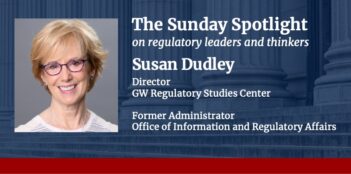
Many business professionals find SEC’s social media guidance insufficient.
Could social media sites such as Facebook or Twitter soon become a tool for tracking investment news? Possibly, according to the Security and Exchange Commission (SEC), which announced last week that corporations may use social media sites to make business announcements without violating disclosure rules.
The recent SEC guidance states that making business announcements via social media sites does not violate the Regulation Fair Disclosure rule, also known as RegFD, provided corporations give shareholdersprior notice concerning which specific social media sites they will use to make disclosures.
Reg FD is intended to preserve fairness by ensuring that some investors are not made aware of “material, non-public” business information before other investors, which might give them an unfair advantage in managing their assets.
However, the guidance states that disclosures on the personal social media page of an individual corporate officer are unlikely to be considered acceptable. The SEC expressed concern that an individual officers’ personal page “would not ordinarily be assumed to be” a channel “through which the company would disclose material corporate information.”
According to one communications agency, many investor relations professionals find the recent guidance inadequate and unclear. A survey conducted by KCSA strategic Communications reportedly revealed that 77 percent of the surveyed CFOs and Corporate Investment Professionals from major public corporations do not believe the guidance sufficiently addressed the specific concerns associated with using social media as a tool for making business disclosures.
The news release company Business Wire took its criticism a step further, arguing that the guidance is a “disservice to investors” because it threatens “increased fragmentation of price-sensitive information.” Business Wire’s CEO, Cathy Baron Tamraz, expressed concern that the guidance may lead to unintended consequences, namely “limiting access to a single site that doesn’t have the security, reliability, or interface to reliably serve the entire investment community.”
The SEC publicized the guidance following an investigation into a Facebook post published by Reed Hastings, the CEO of Netflix. In July 2012, Hastings announced on his Facebook page that his company Netflix had for the first time streamed 1 billion hours worth of content to users in one month—an announcement that could potentially affect investor behavior.
According to the SEC’s press release, Netflix’s stock price increased from $70.45 at the time of Hastings’ Facebook post, to $81.72 by close of business the following day. The information was accessible to some 200,000 Facebook members who subscribed to Hasting’s page. The SEC did not file any formal charges against Netflix.
The agency seemed to generally support moving disclosures to social media sites. It concluded its guidance by stating that it appreciates “the value and prevalence of social media channels in contemporary market communications” and “supports companies seeking new ways to communicate and engage with shareholders and the market.”
This is not the first time that technological advancements have caused confusion regarding the application of RegFD. In 2008, the SEC released guidance to clarify how businesses should apply the regulation to company websites. The recent social media guidance used the 2008 interpretive release concerning website disclosures as a foundation to build upon.



